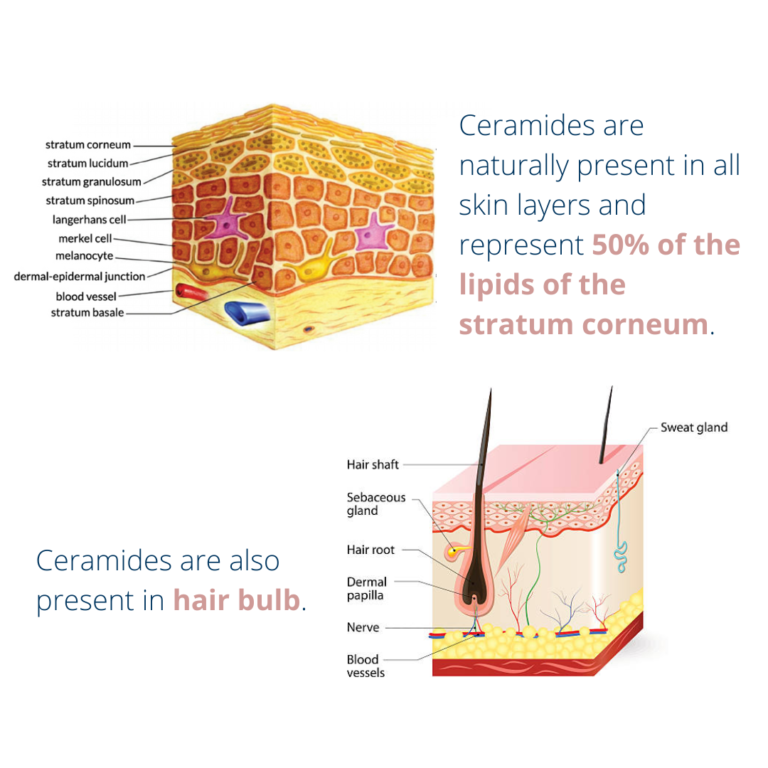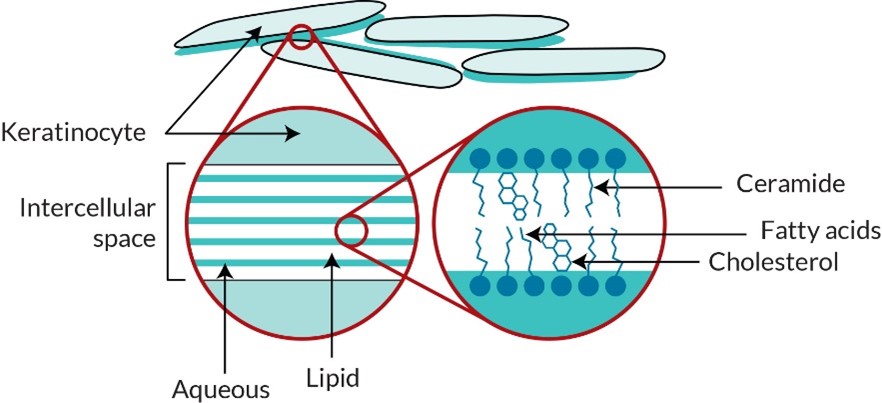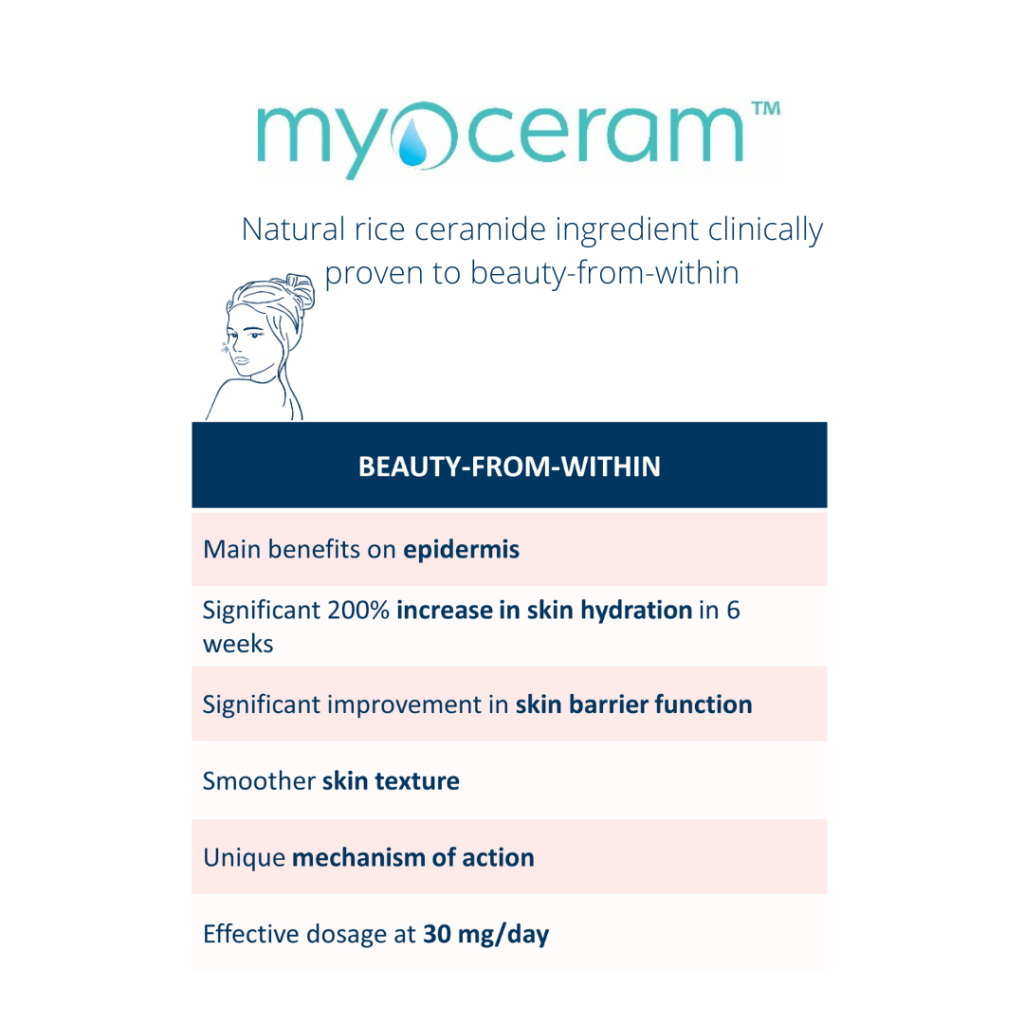Where do we find ceramides?
Ceramides are naturally present in all skin layers and represent 50% of the lipids of the top layer, the stratum corneum.

What is the role of ceramides?
Ceramides are waxy lipids that play an essential role in structuring and maintaining the skin’s barrier function, in other words to prevent the escape of water.
Necessary to ensure the integrity of the epidermis, they are also present in the hair bulb and allow, among other things, good nutrition and protection of the hair.
Ceramides do not only play a structural role in biological membranes, but also act as a cellular signaling molecule.
How do ceramides look like?
A ceramide is a sphingolipid resulting from the combination of a fatty acid with sphingosine via an amide bond.

However, the composition of ceramides within the human stratum corneum is very diverse. 12 classes of ceramides have been identified in human skin. They differ from each other according to the composition of the head group or the esterification of the fatty acid.

In Stratum corneum, ceramides are organized into lamellar structures presenting alternating hydrophilic and lipophilic environments. It is this alternating pattern that enable them to contribute to the water-holding capacity of the skin.
Ceramide and dietary supplements?
Ceramides are popular in cosmetic creams and now frequently used in supplements to support skin hydration from within. Below is a summary of benefits from natural rice ceramide ingredient (Myoceram®) clinically proven to beauty-from-within.

